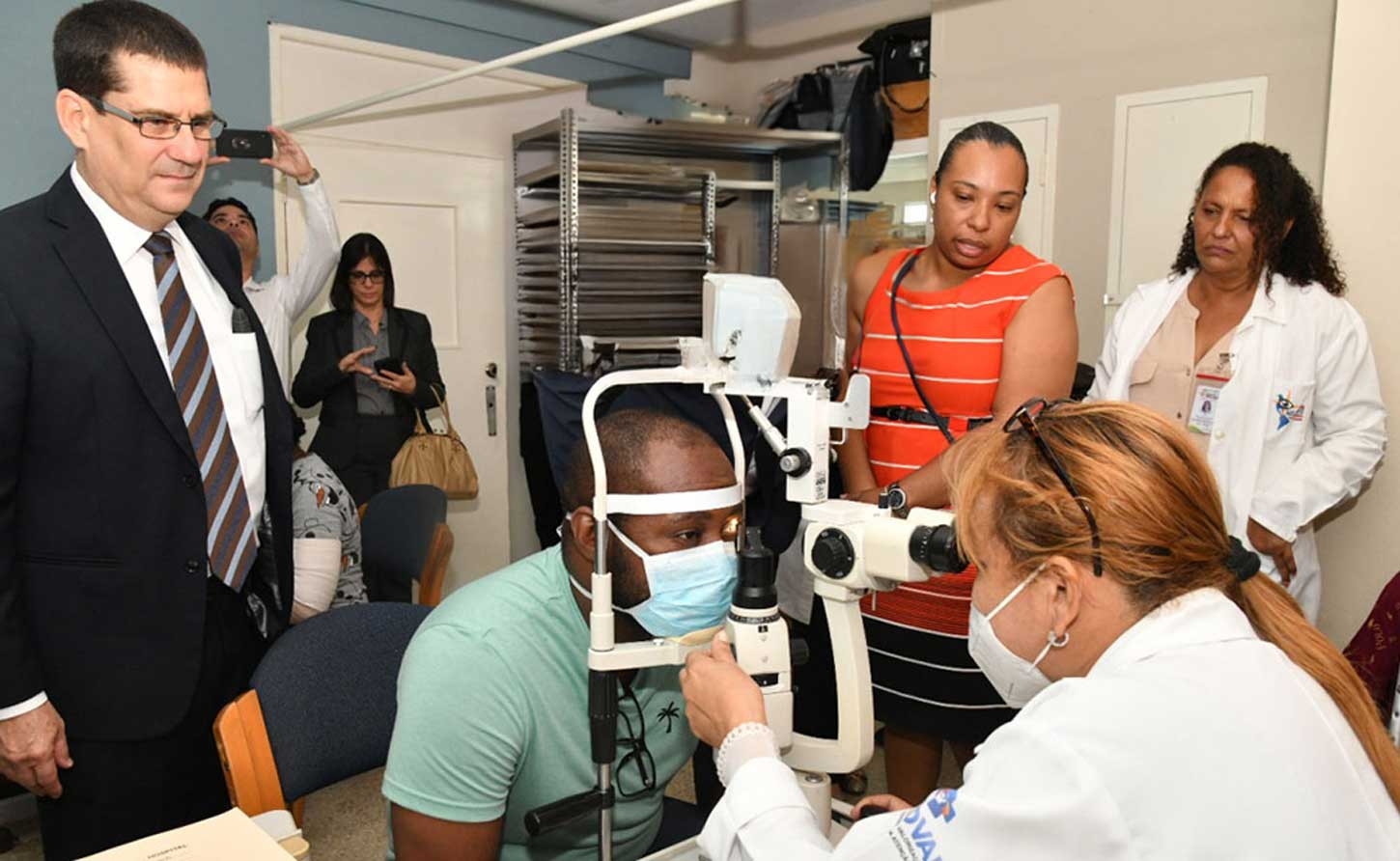JAMAICA | How Cuban Medicine Bridged the Gap in Jamaican Healthcare

MONTEGO BAY, Jamaica, May 16, 2025 - Darkness was closing in, frame by frame. As a writer and photojournalist whose livelihood depends on capturing the world through both words and lens, the gradual failure of my vision wasn't just threatening my career—it was erasing my identity.
Private eye surgery costs loomed like an impossible mountain while my insurance company played the waiting game, each passing day dimming not just my vision but my hope. My computer screen, once a canvas for my work, had become a blurry battlefield.
"Brethren, aren't you an honorary Cuban? Why not check out the Cuban doctors? They are supposed to be the best in the business! In fact, that is what you told me!" my colleague reminded me with a hint of irony that cut through my despair.
The Jamaica-Cuba Eye Care Programme—revived in late 2023 after a pandemic-induced hiatus—hadn't even crossed my mind. All I needed was a referral letter and a trip to St. Joseph's Hospital in Kingston. Such simplicity seemed suspicious in a healthcare landscape often defined by complexity and delay.
I sought the assistance of a colleague and friend who selflessly gave up her day to travel with me from Western Jamaica down to St. Joseph's Hospital in Kingston/St. Andrew. Her companionship was as vital as the medical care I would receive—navigating uncertainty is always easier with someone by your side.
At the hospital gate, fate intervened when I encountered a familiar face—Imogene (Cherry) Reid from the Jamaican Cuban Friendship Association—who navigated me through the bureaucratic maze. The Cuban medical team led by Dr. Mayra Chaveco, operated with a palpable air of professionalism that stood in stark contrast to the often chaotic public healthcare experiences many Jamaicans endure. Despite the crowded waiting area, the system moved with surprising efficiency—a quiet rebuke to our own healthcare infrastructure.
Before I could retreat into cynicism, I found myself facing Cuban Retina Specialist, Dr Roberto Milane´s, whose thorough questioning led to a series of sophisticated eye examinations using state-of-the-art Zeiss machinery. By the time three different specialists had examined my eyes, I discovered the final assessment by Dr Milane´s had been conducted using advanced laser technology—equipment often mythical in local facilities.
The result? I was able to see ! I was able to read the Adveritising boards and street signs on my way back to Montego Bay, much to the annoynance of my travelleing companions. They had to bear my continuous lamentations of gratitude for the work of the Cuban Eye team, who had given my eyes a new lease on life.
This personal salvation is just one thread in a larger tapestry of success. The program has become a beacon of light—quite literally—for 1,230 Jamaicans who have regained their sight over the past year. Under Natasha Biggs' coordination, 17 Cuban doctors at Saint Joseph Hospital have conducted nearly 5,847 consultations and perform an average of 20 surgeries daily—numbers that raise questions about why our local healthcare system struggles to match such output.
Cuban Ambassador Fermín Gabriel Quiñones describes the initiative as a testament to the strong bond between our nations, though one might wonder why Jamaica needed to import this expertise rather than developing it locally. The warm reception Cuban doctors have received suggests a hunger for healthcare that works—regardless of who provides it.
Health Minister Christopher Tufton's praise for the team during his visit to St. Joseph's Hospital last year highlighted the completion of nearly 500 cataract surgeries, over 200 pterygium operations, carried out by Dr Besaida Bellas Marin as well as laser treatments for approximately 800 cases of diabetic retinopathy conducted by Dr Roberto Milane´s.
"The population has very positive comments about the personal interaction, customer service, procedures, results, and how their vision improved," Tufton noted—an implicit acknowledgment of what our healthcare system should but often doesn't provide.
The program's broader scope includes training Jamaican ophthalmologists and equipment maintenance assistance—sustainability measures that beg the question of why similar capacity-building initiatives aren't more widespread in our healthcare system.
Since its 2009 inception, the program has screened over 35,000 patients, conducted 22,000 surgeries, and prevented blindness in nearly 20,000 individuals. These aren't just statistics; they represent lives transformed while highlighting the gaps in our healthcare infrastructure that made this intervention necessary.
As I walked out of St. Joseph's Hospital with restored vision, I couldn't help but see the irony: sometimes we must look through our neighbour’s eyes to clearly perceive both our challenges and solutions.
As a resident of Western Jamaica, I'm acutely aware that this medical miracle remains geographically inaccessible to many. Patients from Westmoreland, Hanover, St. Elizabeth, Trelawny, and St. James must brave notoriously bad roads and make the arduous trek to Kingston to access these services.
My hope is that some arrangement can be made for the eye team to visit the western parishes at least one week every month, bringing their expertise closer to those who need it most but can least afford the journey.
The Jamaica-Cuba Eyecare Programme doesn't just offer medical treatment—it provides a lens through which to examine what healthcare could be when nations prioritize people over partisan politics and results over rhetoric.
For many Jamaicans like myself, it's more than international cooperation—it's the difference between darkness and light.
-30-

 En
En  Ar
Ar